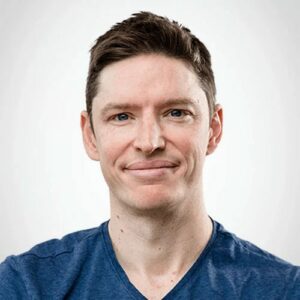You’re sitting with your team going over their latest delivery. The project is working as intended, all the functionalities are in place, and sans a few minor quirks, it seems stable enough for a pre-release. And still, there is something amiss, something not quite right.
Maybe it’s the interface, maybe the colors are off, or maybe the navigation isn’t what you expected. Whatever the case may be, there’s a stark disconnect between what you envisioned and what the UX designer delivered.
This is nothing new and it’s to be expected. Iterative design is a back and forth process between the development team and the interested party. With each cycle, the view of the product owner/user/decision-maker is incorporated into the project and the final product is given shape.
Or, at least, that’s how it’s supposed to go. But, in reality, human communication is complex. Sometimes the development team leaves a stakeholder meeting feeling lost, with new directives that contradict previous conversations.
It can be extremely frustrating for a UX developer to have an innovative solution to a problem, but no matter how hard they try, they just can’t get the point across. Or for the stakeholder to have a very clear vision of what they want, but not find the right words to communicate it. In all of these cases, communication has failed.
What is UX Research?
To put it simply, UX research is the practice of studying user interactions and behaviors to help with the design of people-first products and experiences. Within a project, it’s the process in which the user experience specialist gathers information and feedback from users and decision-makers to improve the interface and usability of the project.
In theory, UX research is client-facing, the UX researcher acts as a facilitator asking the right questions to foster discussion and explore all possibilities. Presenting prototypes and recording reactions as well as unexpected issues to improve on.
In practice though, what we think we need isn’t the same thing as what we need. Our expectations and desires come from a certain perspective, which is extremely valuable, but also limited.
UX designers aren’t just programmers, they’re specialists with plenty of knowledge on aesthetics, accessibility, modern trends, technology, and other aspects of interface design. Their input can show the limitation of our vision and give new insights on how to best approach the relationship between user and software.
I like to think of UX research as a conversation between two individuals, each with their own perspective trying to find common ground with dialogue, like the philosophers of old. But an aimless dialogue can be even more unproductive than no communication at all.
For me, two core questions act as a guiding light for dialogue about UX:
- What are the objects?
- What is the interaction between the objects?
OOUX Changed the UX Landscape
OOUX stands for Object-Oriented User Experience, it’s the process of planning a system of interacting objects and information within your website, app, or digital tool, with an object/noun first approach.
When done correctly, OOUX facilitates a spiderweb-like system organization in contrast to traditional hierarchical tree structures. It’s the difference between a fluid webpage like Wikipedia and having to go through three different links to reach your intended destination.
Think of it like this: imagine that your project is like a coffee shop. In order to open for business you need things: coffee, tables, chairs, cups, a counter, and so on. These are all objects, and they all serve a role in your coffee shop.
For a long time, designers approached UX design with an action-first approach, in other words, the first thought about the actions users would take and they built around those actions. To return to our example, that’s like saying “I want a place where people can drink coffee”.
Here is the problem with this approach, instead of having a nice coffee shop, I could dig a hole in the ground, fill it with coffee and sell customers a straw to drink from my coffee pit. Inventive? Yes. Does it meet the criteria? Yes. Does it align with the mental image of my client? Probably not. Is it likely to succeed? Never.
When we create a mental model of what our project looks like we tend to think in terms of images, not as a process. So, it makes sense that our research should focus on painting a clear picture of what those images are. But how to do it?
Tips from ORCA
ORCA stands for Objects, Relationships, CTAs, and Attributes, and it outlines a process for creating solid object-oriented user experiences. It’s a fifteen-step process that is highly detailed and extremely productive.
Fortunately, we don’t have to go over all the steps, in fact, for UX research we can get by with the first two: object discovery and relationship discovery.
As I mentioned before, objects are the things your project is made of. We find them in the user stories or the product statement. For example:
“We’re building a platform to help stressed users with meditation exercises they can do from home”
Right there we have three different nouns the UX researcher can use to start working on the project. The first step would be to expand on these nouns, for example, stressed users have names, emails, usernames, gender, body weight, and so on.
Once the objects are discovered and defined we can establish the relationships between them. These relationships inform us about their potential interactions and will help us pinpoint the actions for each of these objects.
Users do the exercises, which in turn can be counted and tracked, there is a relation there, so it would make sense to create an interface where the user can track which exercises they’ve done in the past and for how long. It’s that simple, by understanding how two things are related we can decide what actions are needed.
When we put it like that, it makes sense right? What ORCA does is cut the process into small slices so we don’t get overwhelmed by information. Instead of talking non-stop for hours and mixing objects with actions, we are taking one step at a time, slowly building the infrastructure for our project.
Aligning Design, Goals, and Dreams
UX has a direct impact on productivity, and if we want to make the best project possible we have to get it right. ORCA and similar methodologies are built on the foundation that good projects align the process with the vision of the product owner, the needs of the user, and the experience of the developer.







